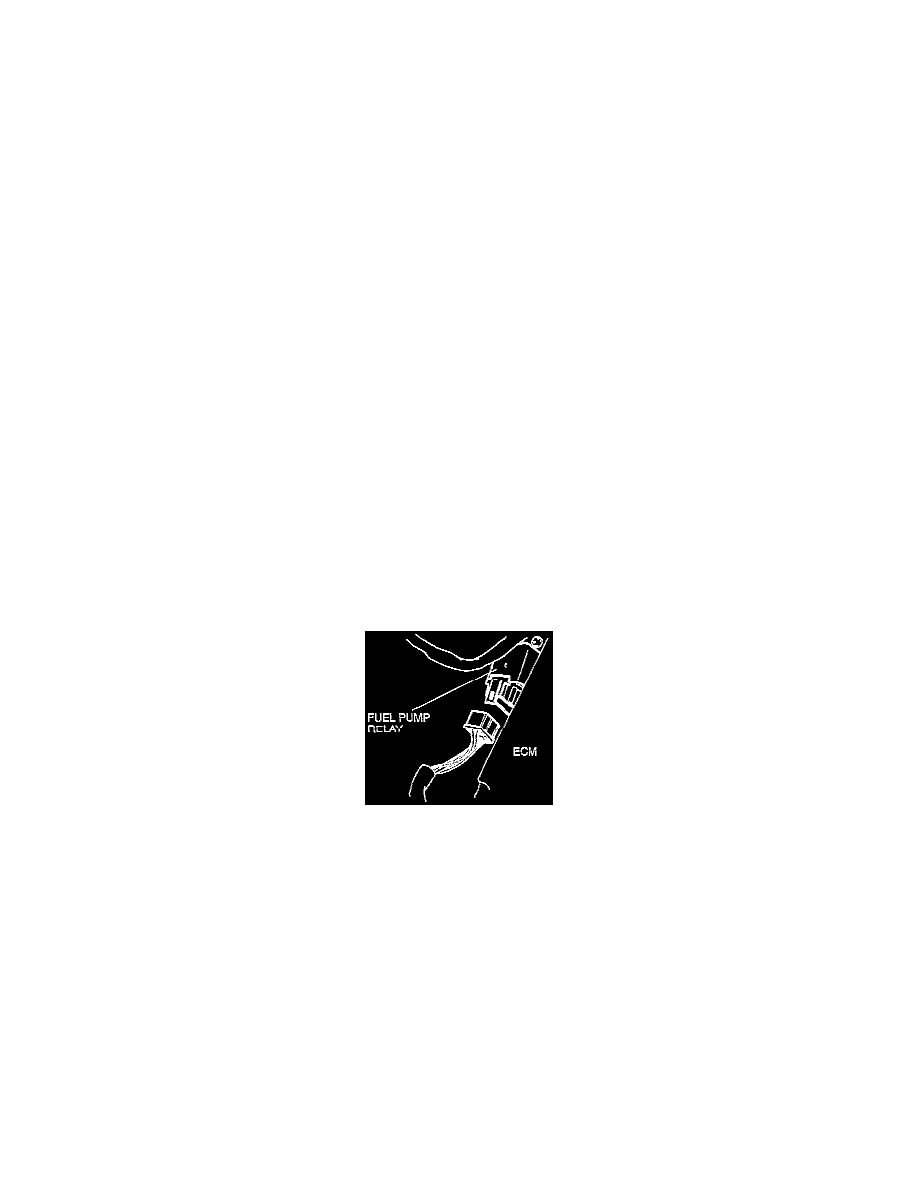MPV LX 4WD V6-3.0L SOHC (1997)

Fuel Pressure Release: Technician Safety Information
WARNING: Adhere to the following procedures any time the fuel system is being worked on in order to reduce the risk of fire and personal
injury:
-
Keep a dry chemical (Class B) fire extinguisher near the work area.
-
Place a "CAUTION FLAMMABLE" sign in the work area.
-
Work in a well-ventilated area. Do not smoke, and keep sparks and open flames away.
-
Wear eye protection.
-
Use caution when working near the catalytic converter to prevent the possibility of burns or fire. (The temperatures within the converter can
exceed 537 degrees C (1000 degrees F).)
-
Relieve the fuel system pressure prior to disconnecting fuel system components.
-
Disconnect the negative battery cable except for tests where battery voltage is required.
-
Use a suitable container to store or catch fuel.
-
Do not replace fuel pipe with fuel hose.
-
Plug all disconnected fuel line fittings and hoses.
-
After making any fuel system repairs ALWAYS inspect for fuel leaks.
Fuel Pressure Release and Servicing Fuel System:
WARNING:
-
Fuel vapor is hazardous.
-
It can very easily ignite, causing serious injury and damage.
-
Always keep sparks and flames away from fuel.
Fuel in the fuel system is under high pressure when the engine is not running.
WARNING:
-
Fuel line spills and leaks are dangerous. Fuel can ignite and cause serious injuries or death and damage.
-
Fuel can also irritate skin and eyes.
-
To prevent this, always complete the following "Fuel Line Safety Procedures".
Fuel Line Safety Procedures:
1. Release the fuel pressure before disconnecting a fuel line.
-
Start the engine.
-
Disconnect the fuel pump relay connector.
-
After the engine stalls, turn the ignition switch to OFF
-
Connect the fuel pump relay connector.
2. Avoid leakage.
-
When disconnecting a fuel line hose, wrap a rag around it to protect against fuel leakage.
-
Plug the hoses after removal.
3. Install hose clamps to secure the fuel pressure gauge connections.
